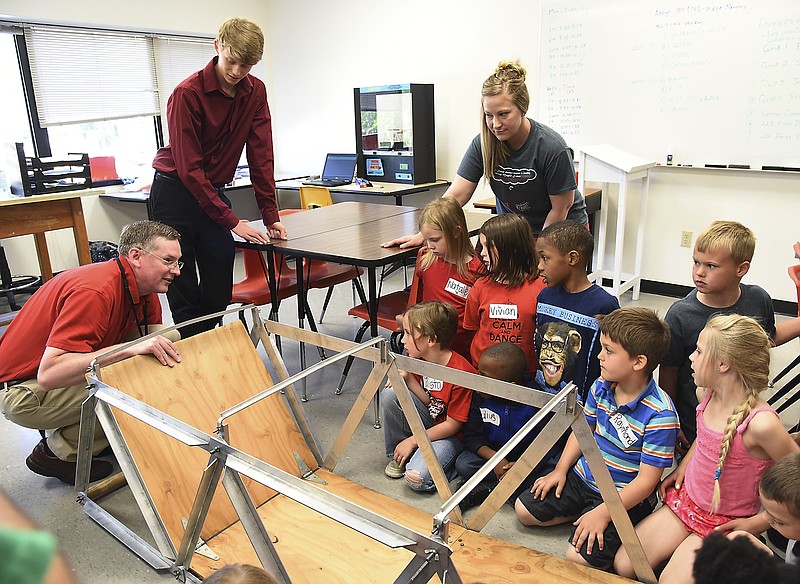One of first-grade teacher Jaci Jackson’s classes a few years ago had trouble thinking creatively and problem-solving.
She knew she had to change her approach if she was going to break through to them, so she started incorporating STEM (science, technology, engineering and mathematics) projects into her curriculum.
Right away, she noticed a huge difference in their learning.
“It’s a huge excitement factor,†Jackson said. “They’re completely willing to make mistakes, and they’re willing to try things. They can do a lot more difficult math now because they’re willing to try things and persevere.â€
The Moreau Heights Elementary School students are building truss bridges and testing their structural soundness with blocks and pennies, as well as taking apart electronics to understand how they function. Jackson said engineering isn’t her specialty, and many of the projects they’ve done she has found through social media.
“I just know how important all of this is, and it’s their future,†she said. “Cursive writing isn’t their future. Now we have a kindergarten class dabbling in it. A lot of classes want to explore more (STEM learning). Many students have never been exposed to it.â€
Jackson’s class made a trip Friday to Nichols Career Center to participate in the Project Lead the Way Principles of Engineering class.
Karen Brickey, Jefferson City district coordinator for Project Lead the Way, said she saw on Twitter some of the work Jackson’s class was doing and decided to invite them to join the engineering class.
Integrating STEM projects into younger grades is critical, she said. Developing problem-solving skills early on is a vital way to prepare them for future grades.
Together, each class tested the truss bridges they had previously made for structural soundness. The high school students’ model bridge was a little more sophisticated and cleanly built, but even so, one first-grader’s bridge held up just as well under pressure.
The students put the model bridge, made from popsicle sticks and glue, into the structural stress analyzer, and it tested to hold 98 pounds of pressure. The bridge made by a 10th-grade student could withstand 38 pounds of pressure but was also shorter in length with fewer reinforcements.
They also formed groups and built truss bridges out of toothpicks and colorful gumdrop candies. After their bridges were finished, they hung a Dixie cup from the center of the bridge and dropped pennies in one by one to see how much weight it could hold.
Many of the high-schoolers were impressed with how many pennies the bridges could hold.
Tenth-grader Ayla Nitz watched and gave words of encouragement as her two first-grade students formed a bridge of the materials. Her class spent several weeks learning the math behind the bridge construction before building one hands on.
“It’s really interesting working with younger kids because, with our grade, we’re so mathematical with this,†Nitz said. “They’re just building bridges for fun, and their bridges are pretty good.â€
David Straatmann, senior project engineer from Bartlett & West, helped facilitate the lesson by demonstrating why the bridge holds up well. He brought in a model the students could crawl through to test its strength with their body weight.
“I love doing anything dealing with kids and teaching engineering and the importance of math,†Straatmann said.
He visited the Principles of Engineering class a couple years ago and saw the design program the students were learning. Straatmann was impressed — he didn’t use that kind of technology until he was in college.
Taking these courses in high school will be a big leg up for the students who want to get into engineering, he said.

